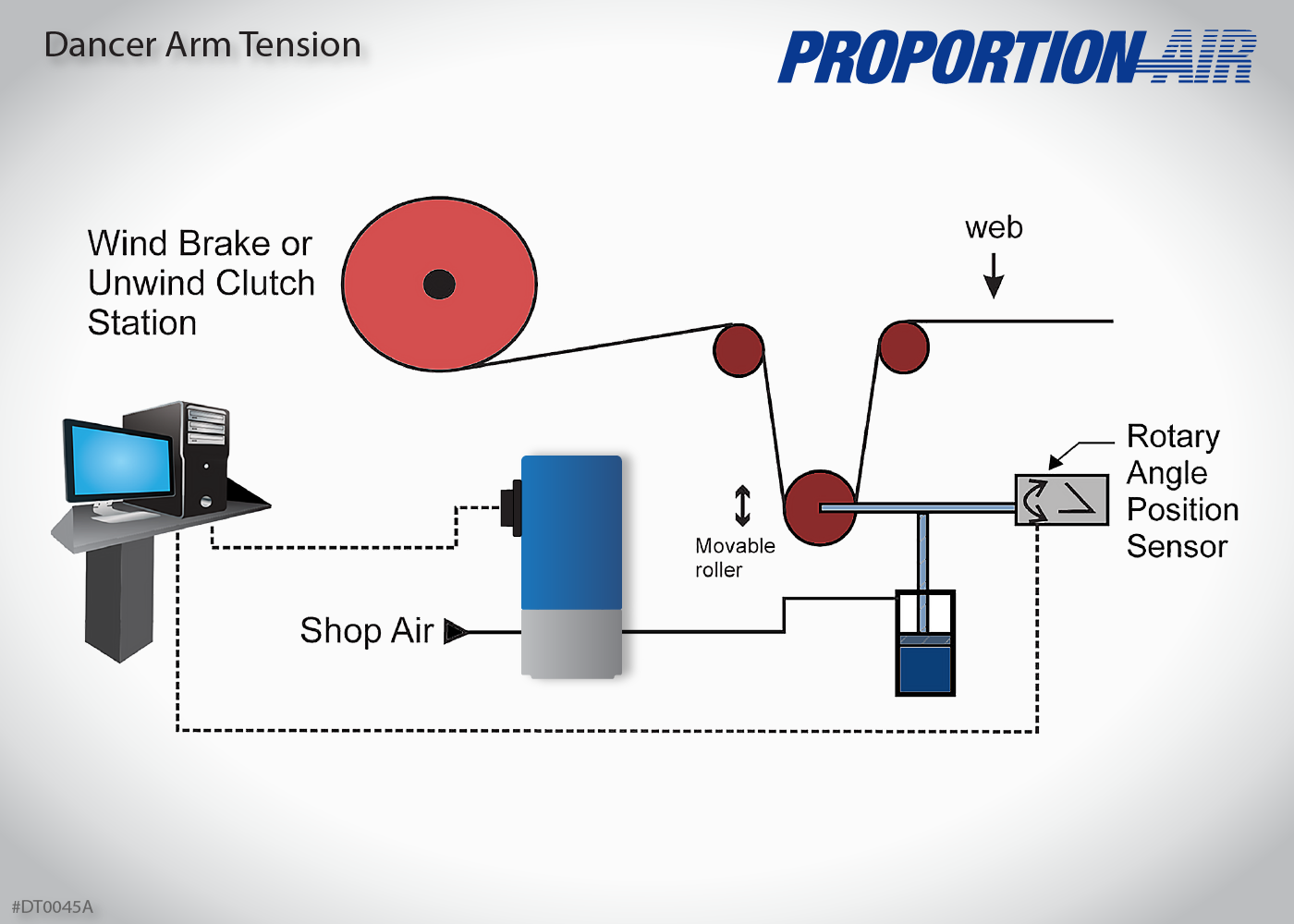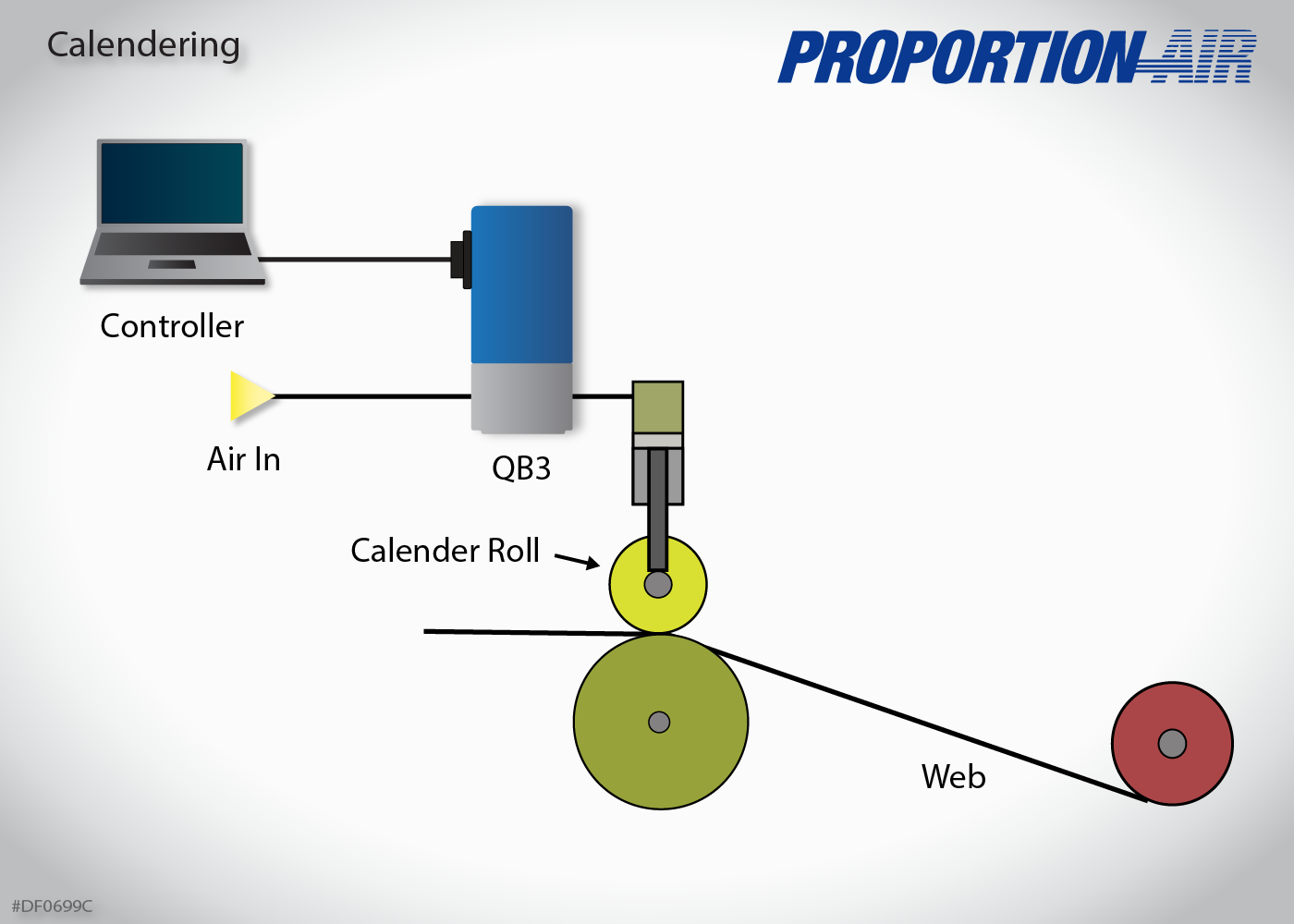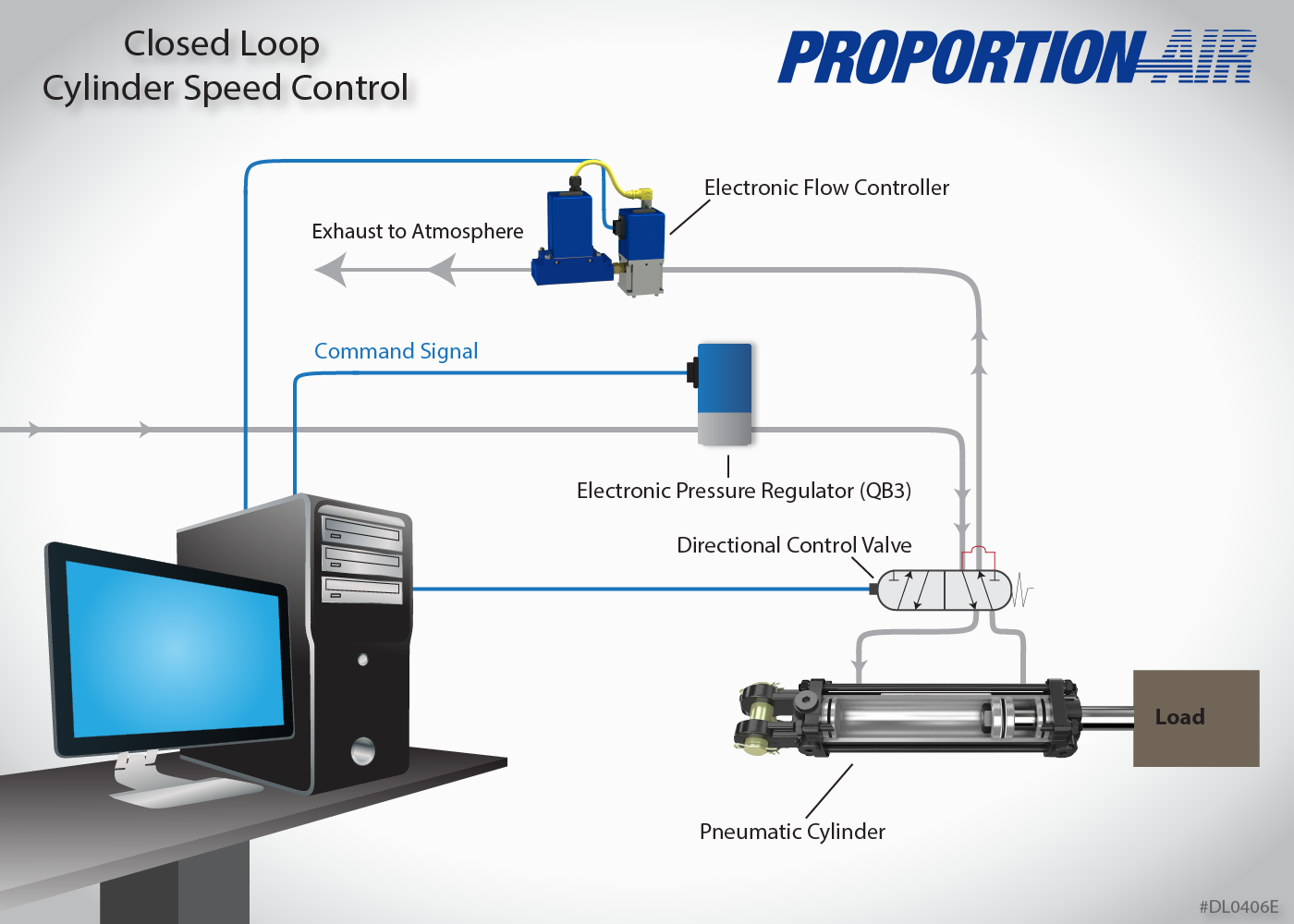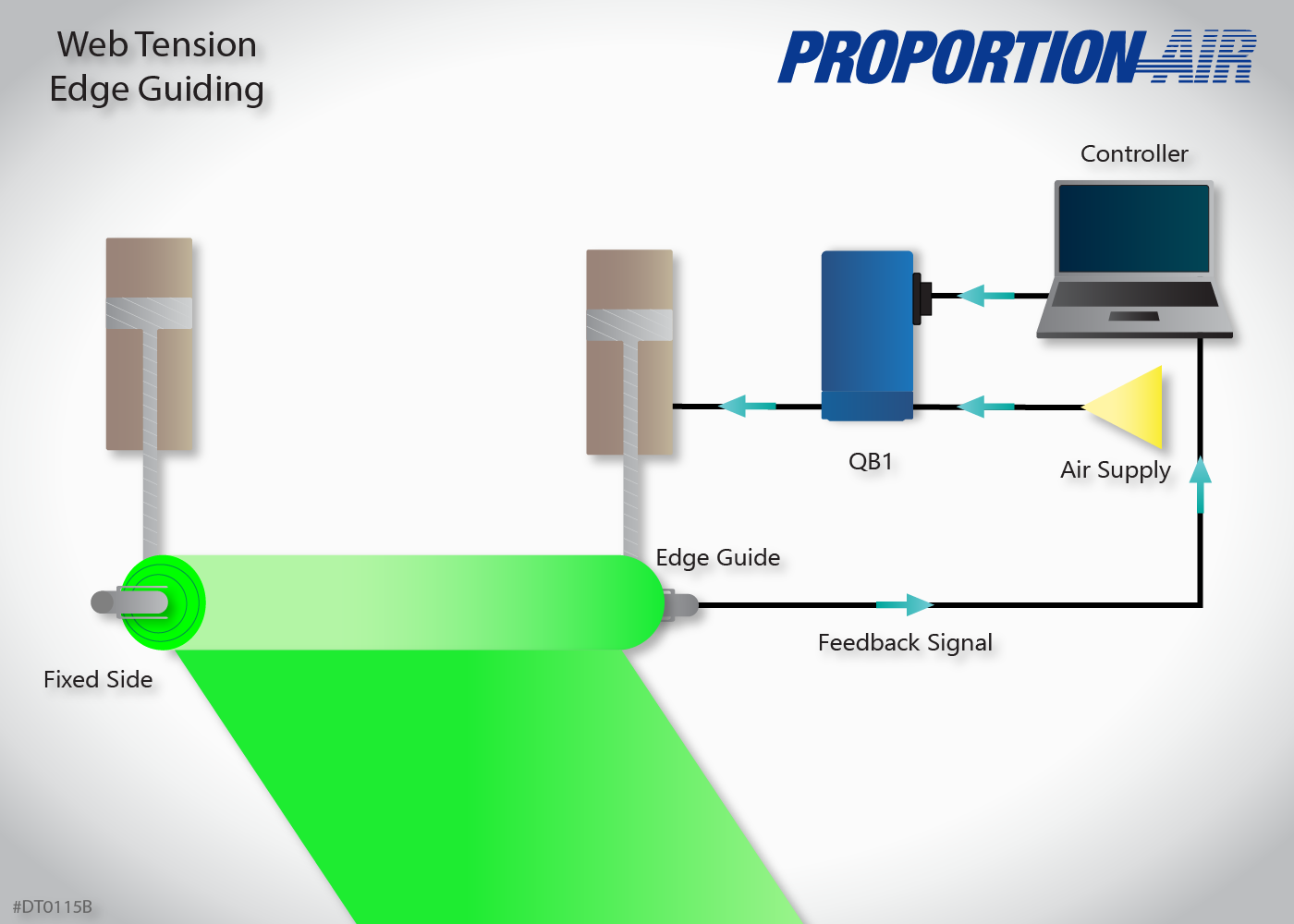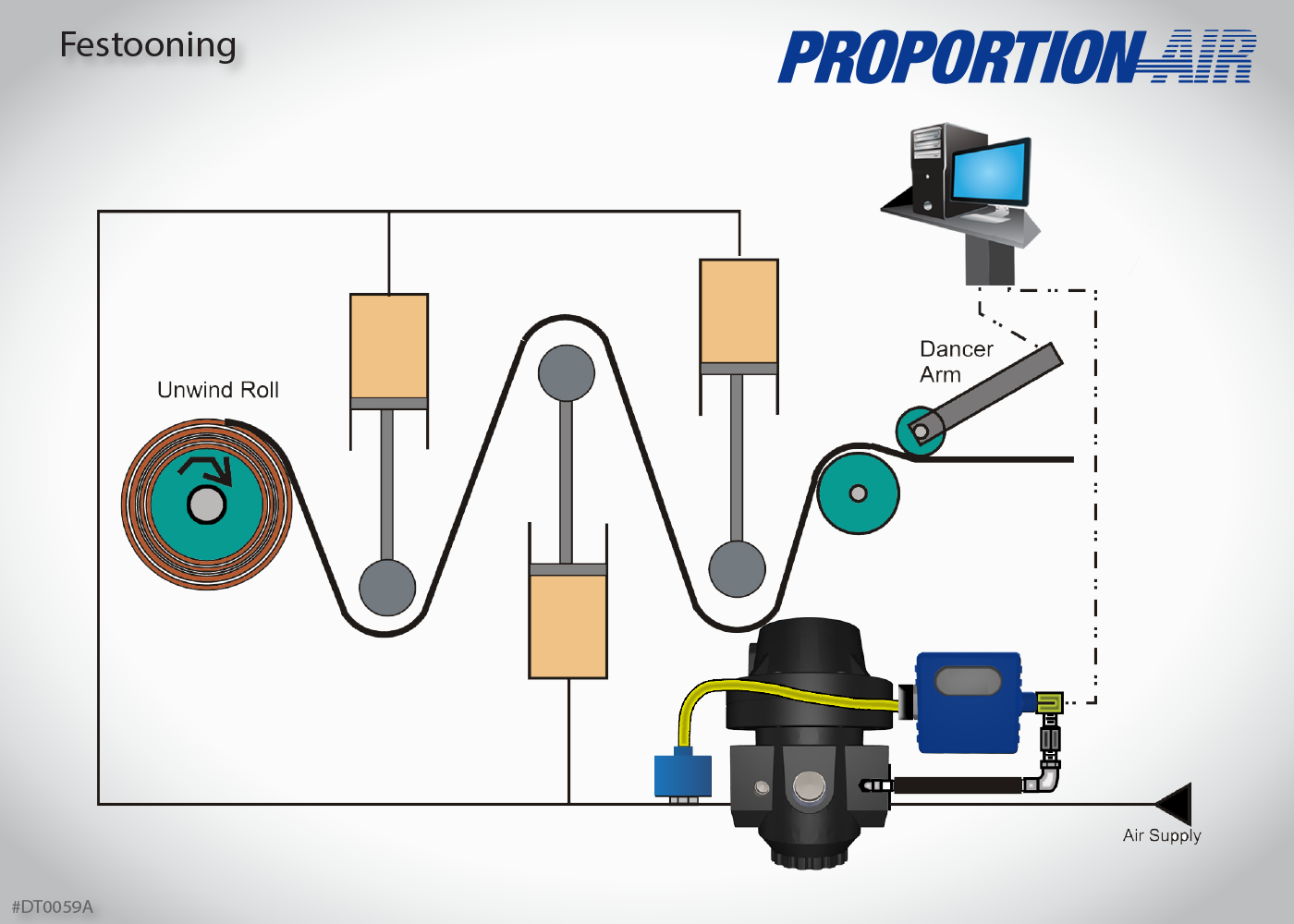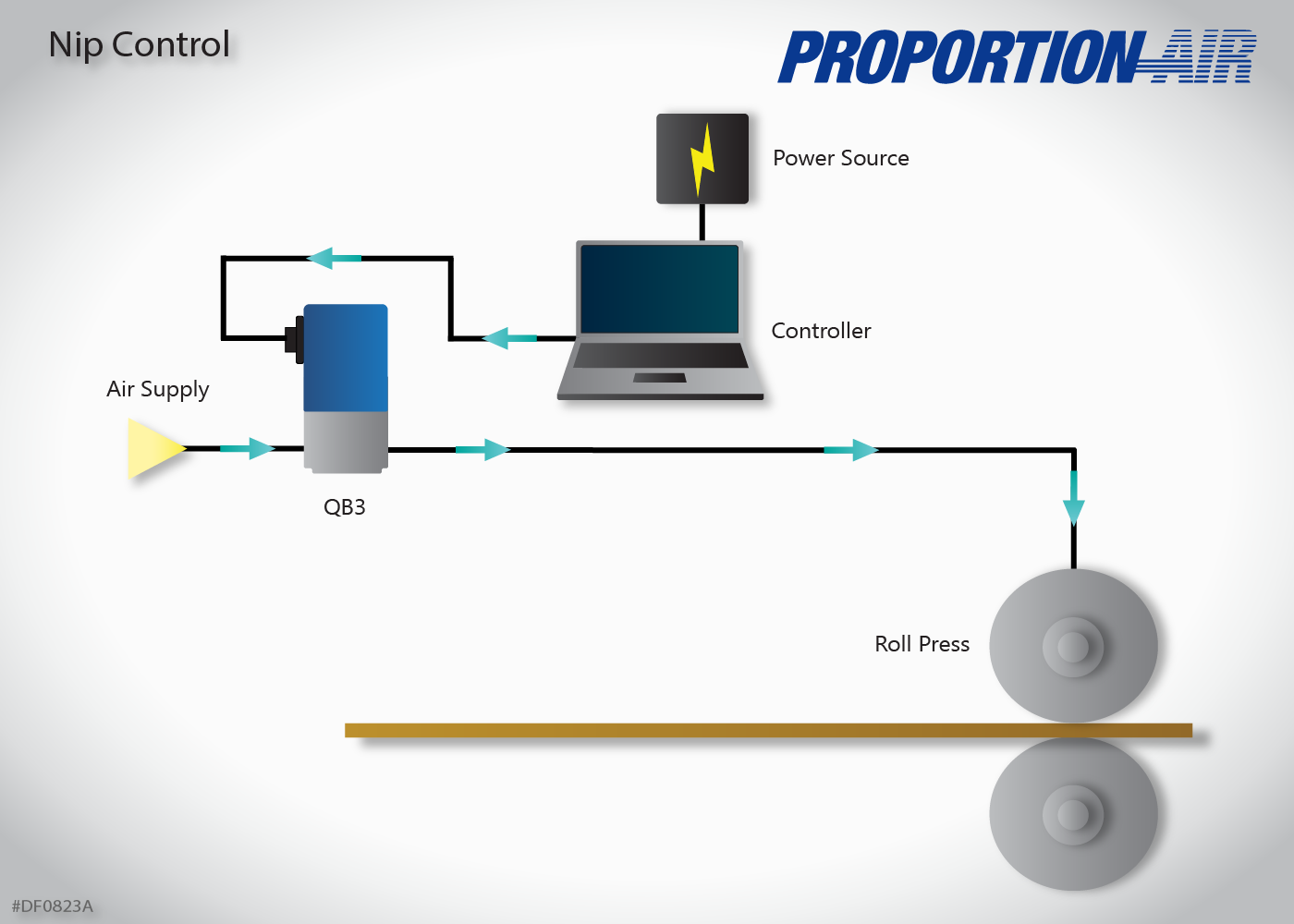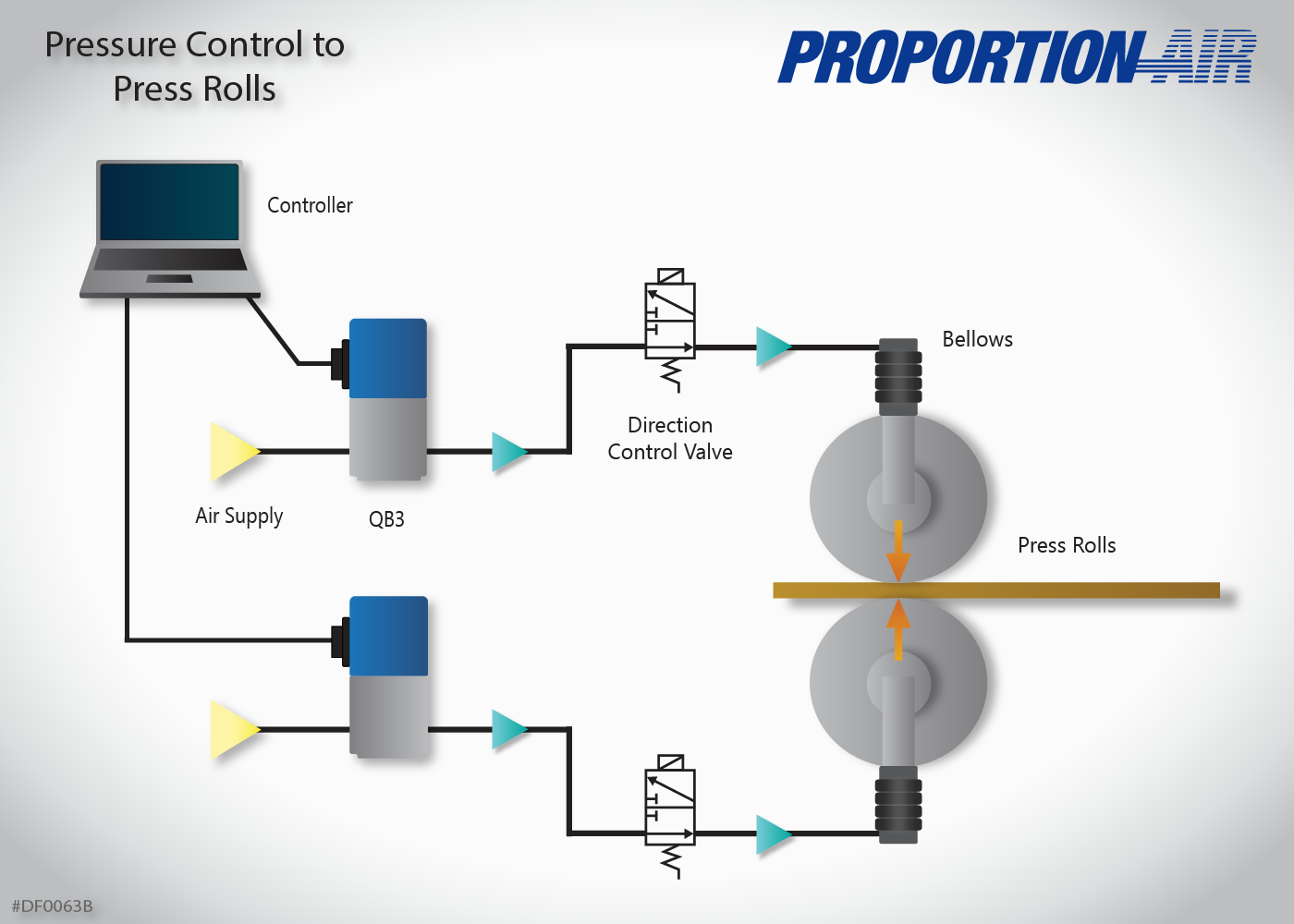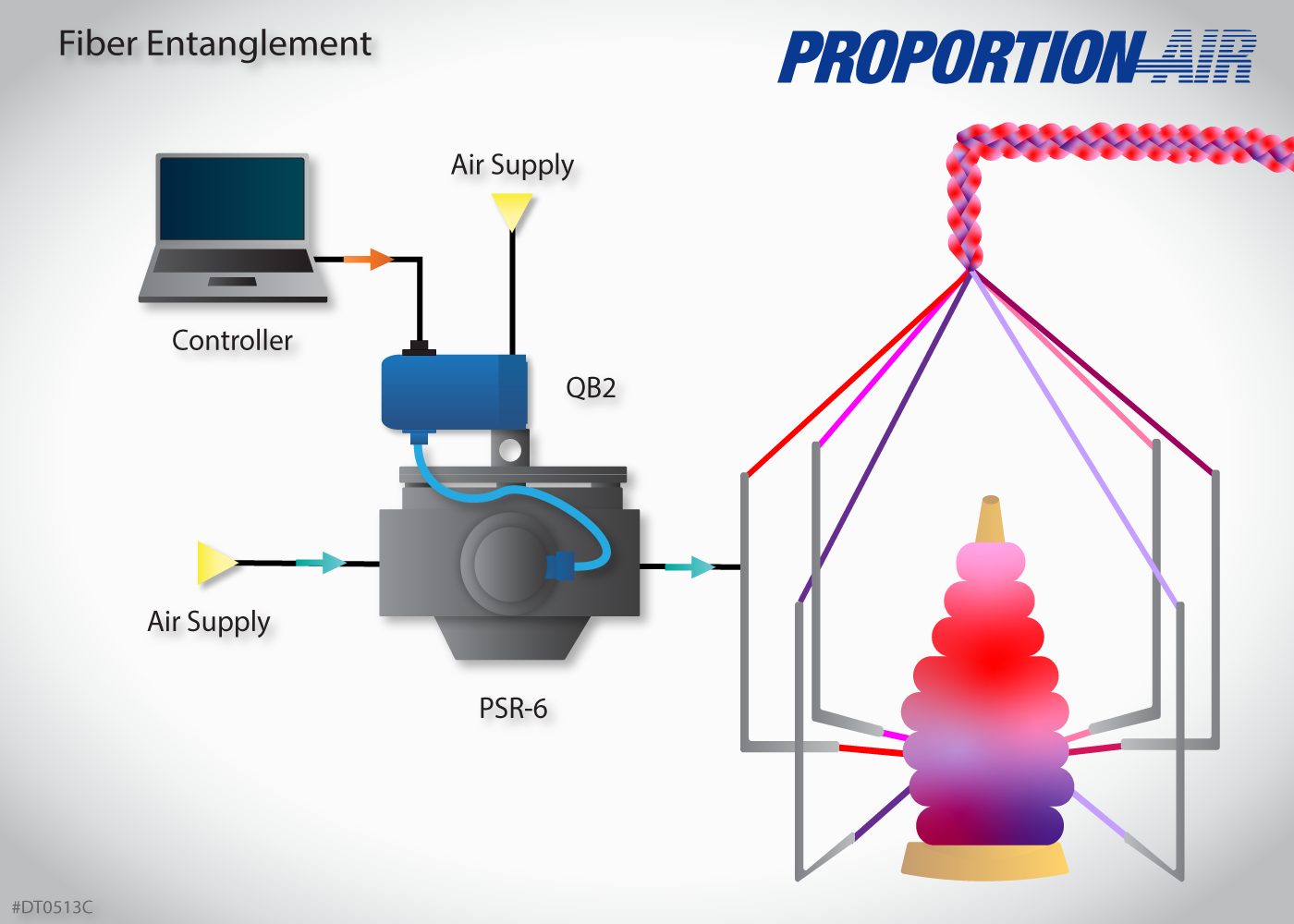Converting
Many materials, such as paper, film, metal and plastics, are produced and sold in long, continuous sheets stored on large rolls. These rolls allow for more convenient transportation, handling and removal. The products on these rolls are then used in many industries to make various products. The process of unwinding these large rolls is known as converting, because the rolled material is being converted into a specific manufacturing use. This process requires excellent tension control to ensure the roll is unwound/wound at a consistent tension. Proportion-Air is often used to control tension and pressure in converting applications like:
- Air brake and clutch control for winding and unwinding rolled materials
- Regulation of spray adhesive application
- The use of pressure to dispense powder during film manufacturing
- Dancer cylinder control
- Edge guide control of web during winding or unwinding
- Nip roll control for the lamination of components
- Regulation of pneumatic clutches and brakes
ROLL CONTROL
When it comes to unrolling a product like paper or steel, the important thing is to unroll so you can cut your product into manufacturable portions. Maintaining the same amount of tension as the roll unwinds or rewinds is crucial; the tension has to be the same all the time or the cuts will not be the same.
To maintain that tension, you can install a pneumatic actuated brake for the unwind, or a pneumatic actuated clutch for the rewind. Because roll diameter is directly proportional to pressure on the brake or the clutch, it’s critical to maintain the same torque, whether you have a full roll or core diameter. If the torque remains constant throughout the cutting process, you’ll have a consistent product.
